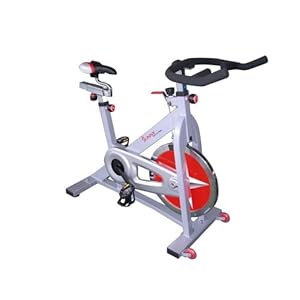Using a stationary bike, you can have resistance to build up the strength in your legs. It is also a good way to alleviate some of the pain in your knee joint. The one thing that you can do to immediately help eliminate some of the pain from your knee is to strengthen your quadriceps.
You can strengthen you quads using a stationary bike to so that it doesn't put any pressure on your knee joints. This is a good start in knee rehab because it focuses on building up the surrounding muscles around your knee joints. By strengthening your quads, you can help stabilize your knee joints. Rehabilitative exercises strengthen the muscles and joint structures that support the knee, improve stability and increases flexibility and range of motion.
Stationary exercise bikes provide excellent cardio workouts without stressing weight-bearing joint; have much less impact on knees, hips and other joints. People who have experienced a bad knee can tell you the difficulties that it can cause. Because your knee is used in most of your daily activities, a knee injury will have a significant impact on your life.
Activity can cause knee injury
Jumping, bending at the knees and deep squats are the most common causes of knee injury. Any exercise that uses springy or bouncing movements to lengthen muscles can cause the muscle to contract rather than to stretch. If you have a history of knee pain, do safer exercises like cycling.
Upright stationary bikes
The upright stationary bikes come in single and dual action models. Dual action bikes work well for those with hip or leg injuries who need to exercise but also need to go easy on their legs. The dual action allows the arms to work harder to operate the machine, thus requiring less work from the legs.
It’s also a good option for people with balance problems, because there is no need to lean the bike to turn.
How to use stationary bike for knee rehab
Want to go for a routine? First of all, you can do it slowly, perhaps with a five-minute session at a comfortable pace three times per day. Once you can ride with no pain for five minutes three times a day, you may up to seven minutes, then to 10, 15 or 20 three times per day, getting to 30, 45 or 60 minutes of exercise per day.
You have to adjust the seat properly. Your knee should not bend beyond a 90-degree angle, and must remain slightly bent even when you extend your leg as far as you can go. If you do not adjust the bike seat accordingly, it can cause further damage to your injured knee. If necessary, ask your trainer to assess whether the seating position is correct for your practice.
Additional, many cyclists will wear what is commonly known as a knee brace or knee sleeve while they are cycling. The purpose of a knee brace is to provide a secure fit and extra support.
Here's the best stationary bike selections
| ||
|  | |
|  | |
| ||
|









0 comments:
Post a Comment